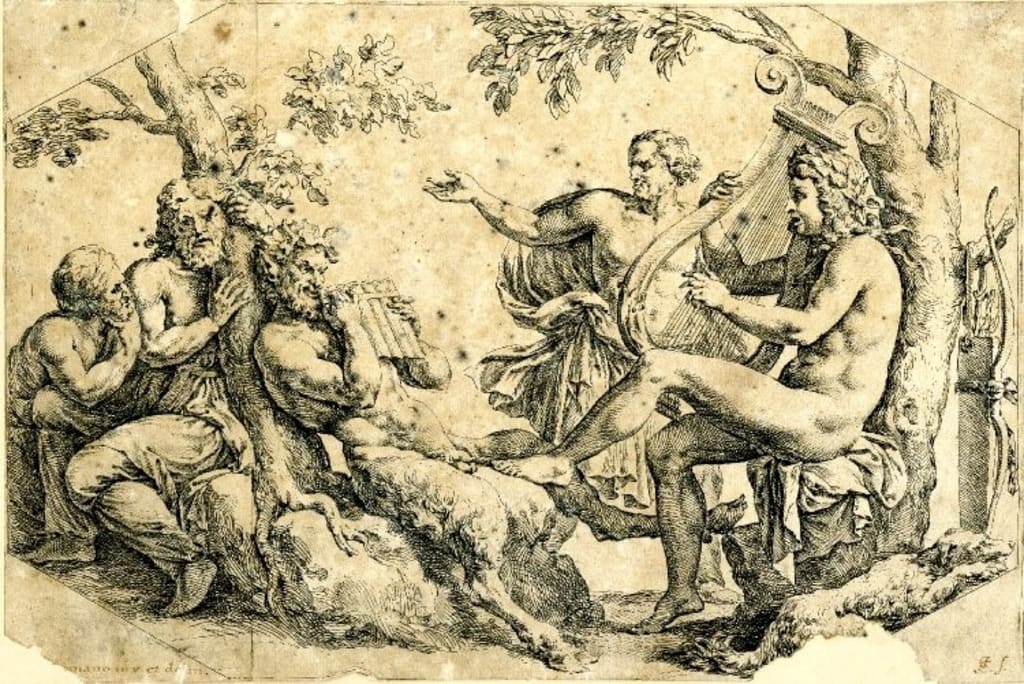Musical Beginnings and Theories
Ancient Music

Music is much more important than most would realize as it lines the history books and holds strong ties to Lore, Legends, and Mythology. It is a foundation that is grounded into the very depths of society as a whole and is used for expression of many emotions and as dedications to the world and people around us.
The oldest song that is known to man, which was discovered, dates back to 3400 years ago from Ugarit. The song was written in cuneiform and impressively deciphered by Anne Draffkorn Kilmer. This was followed up by a demonstration of compositions used for harmonies of thirds, such as the ancient technique of Gymel. The term Gymel being polyphonic music dates back to Early Renaissance and Medieval times. It is a technique, which was used for a temporary division of a single voice, which was generally on a higher note into two, which were equal on a scale but singing different music. On a more personal note, this is a rather impressive technique that was used for the division and a general intricacy of convergence to a single line of music.
While that is pretty amazing, we also have what is known as Seikilos Song which is also known as the Seikilos Epitaph, which was discovered in Tralleis, Turkey in 1883 by Sir W.M. Ramsay, but originated in Greece. The stele was inconspicuously being used as a flower stand within a Turkish woman's Garden prior to its discovery and placement within a museum. This unique artifact was dated back to the first century AD, and while the Seikilos Song is far from being the oldest song, as you would find with Sumerian hymns, it is uniquely whole in both composition and musical notation that has withstood time. There are older compositions, but they have not survived as well as the Seikilos Epitaph had.
Originally, the song of Seikilos was accompanied with the message, "From Seikilos to Euterpe" along with an engraved description of what the stele was truly about: "I am a tombstone, an image. Seikilos placed me here as an everlasting sign of deathless remembrance." It has been agreed upon by most researchers that Euterpe was the wife of Seikilos to whom he had dedicated the song that can be clearly seen upon the stele:
Hoson zēis phainou
mēden holōs sy lypou
pros oligon esti to zēn
to telos ho chronos apaitei.
Which can be loosely translated to:
While you live, shine
Have no grief at all
Life exists for only a short while
and Time demands its Toll.
The Seikilos holds many mysteries, including how it found its way from Greece to Turkey. It is clear, however, that this epitaph was made lovingly from one to another. The Song of Seikilos was more than likely played at the funeral of Euterpe, as was customary in ancient Greek times. In fact, music played an intrinsic role in Greek culture, education, and beliefs and thus is an essential part of Greek life and was held in interest for a variety of people including Plato and the enigmatic figure of Pythagoras, that held a mathematical devotion to understanding Music, itself, and from this derives the term Pythagorean tuning.
When one looks into Greek Mythology, one will find that the word Music derives from the Muses, which were the daughters of Zeus and the Patron Goddesses of Creative and intellectual endeavors. When one delves even further into Greek Mythology, one will find that there are references to a connection between music, how people and this world came to be, and how their destinies were watched over and controlled by the Gods, according to the Greek perception.
Ancient Greece was not the only one, in which music was influential and an essential part of everyday life. There are many other countries and cultures from those times, before and after, that shared such similarities when it comes to Music.
It is amazing how deep music is within our roots. Not only that but how music has altered over the course of time. Yet the music is the one thing that can take us back in time, bring people together, no matter the culture, and has inspired many known and unknown brilliant minds alike throughout the course of history itself.
About the Creator
Sadie Collins-Gidney
Hello! My name is Sadie Collins-Gidney and I am 24 years old. I have a great love for art, poetry, music, culture, people, animals, and of course, my family.






Comments
There are no comments for this story
Be the first to respond and start the conversation.